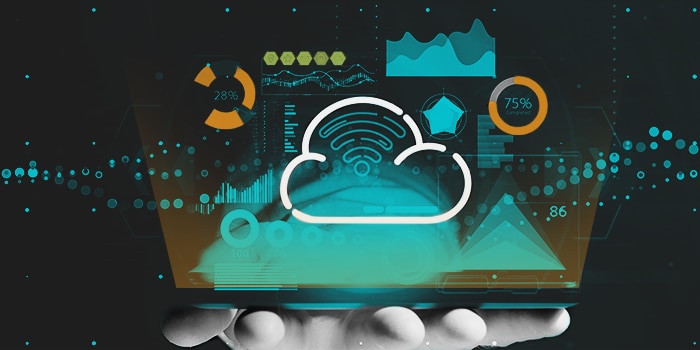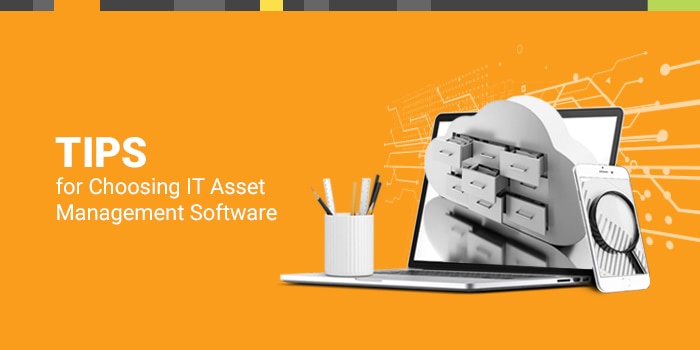IT asset management (
ITAM) and configuration management database (CMDB) are critical components of a service desk, playing a key role in how
inventory within an organization is tracked and managed.
Asset management tracks and reports the value and ownership of all assets throughout their life cycles. CMDB is maintained by the organization, impacting asset management as well as
incidents, problems, changes, and releases. CMDB adds an extra layer of functionality to asset management, helping to reduce risks, lower costs, and improve service delivery.
To maximize the CMDB, it’s important to track any type of IT asset that could have a relationship with service delivery. The struggle for many organizations is identifying that asset data and keeping it up to date. With that in mind, here are six types of IT assets that could make a big difference in service delivery when they are automatically discovered and updated in your
ITSM solution.
Laptops / Computers
Depending on the industry, every employee in an organization could have a laptop. They might be provided by the company or part of a company’s BYOD (bring your own device) policy. In order for IT to best serve those employees and resolve their individual tickets quickly, it helps to know exactly what they’re working with. Labeling laptops and computers as
configuration items (CIs) makes for easy storage of records in a CMDB.
When distributing equipment, effective inventory management through the
service desk platform can streamline request fulfillment, especially when employees request a new one.
Mobile Devices
Employees may have email, instant messaging, and other
mobile applications downloaded onto their devices that keep them connected to the business when they aren’t physically there. In fact,
58% of companies use mobile apps to connect employees to enterprise applications.
But say, for instance, a company-issued mobile device is lost. When that employee submits a ticket, the service desk will already have a record for that device associated with the employee, and they might even be able to identify the device’s location. In the case of BYOD, IT won’t track the locations of devices but may still have the responsibility of making sure the device is secure and supports the work functions that occur on it.
Either way, it can be helpful to track those mobile devices within your service desk platform.
Servers
A
discovery scanner should provide you an agentless way to find the IP-connected devices throughout your infrastructure. It allows you to set the scanning frequency so it is active at optimal times.
The dreaded email server outage can strike seemingly out of the blue, and it can put entire business units at a standstill. But with an integrated service desk, triggered alerts can notify and update impacted users on the resolution status. In addition, a service desk can provide visibility into the issue by recommending alternative email options for employees who depend on the affected server. An automated message can also be sent through the service portal to prevent new tickets.
Maintaining individual server records in the CMDB—and attaching them to incidents, problems, and changes—helps IT identify root causes of issues and troubleshoot server outages before it devastates the entire business.
Routers
Everyone in IT knows how crucial it is to keep routers up and running. If and when a router is somehow disconnected, everyone else in the organization quickly realizes that importance as well. Not only is it essential for keeping employees connected to do their jobs, a router can also potentially reduce costs for smartphone users. If a router disconnects, it could cause users to use precious data that may not be unlimited depending on their phone plan.
Change management could be applied here to minimize the impact and disruption of changes.
Problem management also addresses the root cause of recurring incidents to prevent future disruptions. Complete and up-to-date records for every router will help IT diagnose any issues that could cause users to lose connection.
Switches
Any organization that is
sharing data between devices is likely housing switches somewhere in a closet of IT infrastructure. From time to time, these switches require upgrades or maintenance, which should include some kind of change enablement process through the service desk.
The plan to upgrade a switch can include impacted CIs as well as start and end dates. Change management best practices encourage IT to evaluate risks to avoid disruption to the organization. If you upgrade the switch, who are the tenants that will be affected and for how long? Does it conflict with other changes? Is there any related IT infrastructure that should be considered?
Track switches in your service desk and relate those records to relevant changes to ensure IT avoids negative impact during routine maintenance.
Virtual Machines
Virtual machines have become a valuable asset to a business. They function similarly to physical computers, and their software doesn’t interfere or tamper with the host’s software. Virtual machines may have more advanced capabilities that a host computer might not necessarily have. In addition,
malware has a slim chance of infiltrating a virtual machine. If a virus is detected, the machine has the ability to shut down to avoid infection. All this to say, virtual machines have become a popular tool for IT organizations.
Similar to a laptop, computer, or server, a virtual machine should have its own CI and its configuration records should be stored in the CMDB. If a
server failure was to occur, recovery for the virtual machine could take minutes compared to hours, or even days, of recovery for a physical machine.
Track and Manage With Automated Asset Discovery
So, how do you locate all of these assets and keep them up to date within your ITSM solution? It’s nearly impossible for IT teams to track these items manually, especially since environments are constantly changing. A streamlined way to incorporate this asset data into service delivery is to choose an ITSM solution with a tool for
automated discovery.
A discovery tool builds the foundation for a CMDB, which can provide complete visibility of IT supported services, assets, and their interdependencies to enable smarter business decisions. Automated discovery provides versatility to identify whichever devices or data points are important to the organization. Different organizations have different needs, but most could make use of all of this asset data in some form or fashion.





